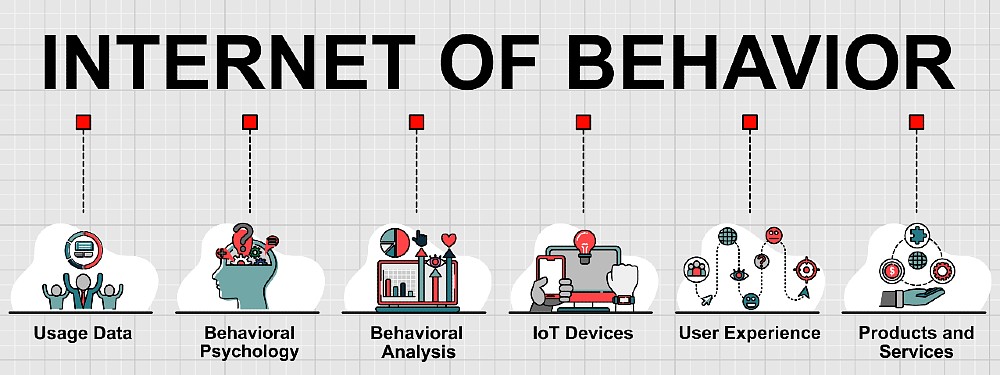CP: What are some of the first steps for businesses to understand and make use of this emerging new technology?
ML: The first step is to learn all the data that is now available to help a business begin to better understand their customers, and to create a strategy on how best to interpret and layer the insights gathered from that data into their strategy and planning.
Second, I’d caution all businesses to learn about data security and privacy, and to ensure they are gathering data legally, transparently and willingly from their customers and prospects. Ensure you are not infringing upon the privacy of your customers with opt-ins, disclaimers and education around what they are allowing you to gather, why you are doing it and how it will benefit them.
Then inspect your tech stack and how your product is used to determine where to gather relevant behavioral data from your customers and prospects. Determine the type of insight you’d like to gain, and what tech would be the best vehicle to gather that data. Are there pre-existing analytics you can slightly tweak? Are you able to build the tech in-house? Should you outsource?
CP: Will making use of IoB provide a competitive advantage for businesses in the years ahead? If so, why?
ML: Without question. Marketers and behavior scientists tend to agree that personalization is key to a service’s effectiveness. The more effective a service, the more a customer will continue to engage with it, and even alter their behavior because of it. IoB allows for this level of true personalization.
CP: Is it a mistake for businesses not to prioritize IoB? If so, why?
ML: According to Gartner, IoB might still be in its early days, but by year-end 2025, over 50% of the world’s population will be exposed to at least one IoB program, whether that comes from the government or a private company. Begin the education process now and learn what IoB will unlock for your business and for the businesses of your customers. That way, as the technology evolves and advances, you’ll be positioned as an early adopter and gain a head start on your competitors when it comes to creating a personalized, engaging and effective experience for your customers and prospects.
CP: What do you hope attendees learn and can make use of from your session?
ML: This is such an exciting (and admittedly, a little scary) new technology, and I want attendees to learn the good, the bad and the ugly of what IoB entails. I don’t sell this technology, and won’t be trying to pitch them on a service or company. I’m simply a fellow tech nerd and enthusiast that has been fascinated by IoT and IoB for the past few years. I look forward to giving partners a baseline of what IoB is and how it’s being used today, what the future holds, and how I believe it will help their businesses gain and retain customers.
CP: What are some of the first steps for businesses to understand and make use of this emerging new technology?
ML: The first step is to learn all the data that is now available to help a business begin to better understand their customers, and to create a strategy on how best to interpret and layer the insights gathered from that data into their strategy and planning.
Second, I’d caution all businesses to learn about data security and privacy, and to ensure they are gathering data legally, transparently and willingly from their customers and prospects. Ensure you are not infringing upon the privacy of your customers with opt-ins, disclaimers and education around what they are allowing you to gather, why you are doing it and how it will benefit them.
Then inspect your tech stack and how your product is used to determine where to gather relevant behavioral data from your customers and prospects. Determine the type of insight you’d like to gain, and what tech would be the best vehicle to gather that data. Are there pre-existing analytics you can slightly tweak? Are you able to build the tech in-house? Should you outsource?
CP: Will making use of IoB provide a competitive advantage for businesses in the years ahead? If so, why?
ML: Without question. Marketers and behavior scientists tend to agree that personalization is key to a service’s effectiveness. The more effective a service, the more a customer will continue to engage with it, and even alter their behavior because of it. IoB allows for this level of true personalization.
CP: Is it a mistake for businesses not to prioritize IoB? If so, why?
ML: According to Gartner, IoB might still be in its early days, but by year-end 2025, over 50% of the world’s population will be exposed to at least one IoB program, whether that comes from the government or a private company. Begin the education process now and learn what IoB will unlock for your business and for the businesses of your customers. That way, as the technology evolves and advances, you’ll be positioned as an early adopter and gain a head start on your competitors when it comes to creating a personalized, engaging and effective experience for your customers and prospects.
CP: What do you hope attendees learn and can make use of from your session?
ML: This is such an exciting (and admittedly, a little scary) new technology, and I want attendees to learn the good, the bad and the ugly of what IoB entails. I don’t sell this technology, and won’t be trying to pitch them on a service or company. I’m simply a fellow tech nerd and enthusiast that has been fascinated by IoT and IoB for the past few years. I look forward to giving partners a baseline of what IoB is and how it’s being used today, what the future holds, and how I believe it will help their businesses gain and retain customers.

